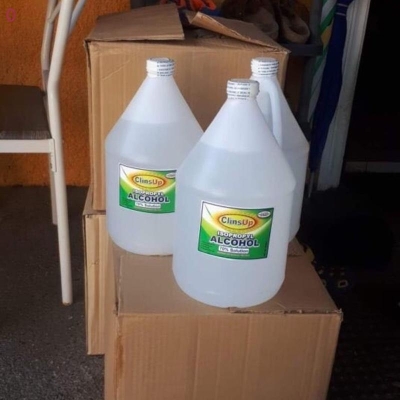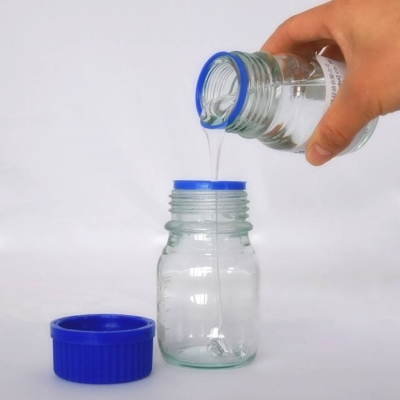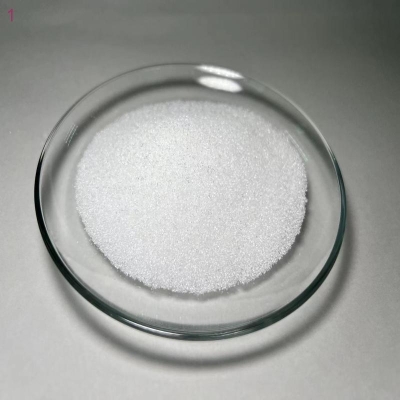-
Categories
-
Pharmaceutical Intermediates
-
Active Pharmaceutical Ingredients
-
Food Additives
- Industrial Coatings
- Agrochemicals
- Dyes and Pigments
- Surfactant
- Flavors and Fragrances
- Chemical Reagents
- Catalyst and Auxiliary
- Natural Products
- Inorganic Chemistry
-
Organic Chemistry
-
Biochemical Engineering
- Analytical Chemistry
-
Cosmetic Ingredient
- Water Treatment Chemical
-
Pharmaceutical Intermediates
Promotion
ECHEMI Mall
Wholesale
Weekly Price
Exhibition
News
-
Trade Service
[ Focus on Chemical Machinery and Equipment Network ] With the opening of November, the third batch of centralized drug procurement has gradually entered the landing stage.
At present, most provinces in the country have issued documents confirming that the results of the third batch of centralized drug procurement will be implemented from this month .
A total of 55 varieties were selected this time, involving multiple therapeutic areas such as hypertension, diabetes, tumor diseases, mental illness, and anti-infection.
The average price reduction is 53%, and the highest reduction is 95%, including 1 cent/tablet of chlorazide Diping, 2 cents/tablet of captopril, 3 cents/tablet of metformin, etc.
will all be officially "sold" to bring good news to the majority of patients and improve the availability of medication.
So, under centralized procurement, are there challenges for pharmaceutical companies, and how will the pharmaceutical industry in the upstream of the pharmaceutical industry be affected?
Chemical machinery and equipment network hotspots pay attention to chemical machinery and equipmentAt present, most provinces in the country have issued documents confirming that the results of the third batch of centralized drug procurement will be implemented from this month .
A total of 55 varieties were selected this time, involving multiple therapeutic areas such as hypertension, diabetes, tumor diseases, mental illness, and anti-infection.
The average price reduction is 53%, and the highest reduction is 95%, including 1 cent/tablet of chlorazide Diping, 2 cents/tablet of captopril, 3 cents/tablet of metformin, etc.
will all be officially "sold" to bring good news to the majority of patients and improve the availability of medication.
So, under centralized procurement, are there challenges for pharmaceutical companies, and how will the pharmaceutical industry in the upstream of the pharmaceutical industry be affected?
What challenges do pharmaceutical companies face?
What challenges do pharmaceutical companies face?Through the principle of price-for-volume purchase, the bid-winning pharmaceutical companies, especially those with a relatively small market share in the past, will bring about an increase in drug sales.
For example, there are about 245 million patients with hypertension in my country, and sales of hypertension drugs such as amlodipine and irbesartan have generally doubled after the centralized procurement of drugs.
For example, there are about 245 million patients with hypertension in my country, and sales of hypertension drugs such as amlodipine and irbesartan have generally doubled after the centralized procurement of drugs.
At the same time, centralized procurement has greatly reduced the demand for pharmaceutical companies in the sales process.
According to Wind data, according to the * industry classification of pharmaceutical manufacturing companies, 172 have released the third quarter report for 2020 (compared to 170 companies with data comparison last year), of which 104 sales expense ratio (sales expense accounted for the proportion of operating income) decreased , Accounting for 60%.
In this regard, the industry believes that behind the reduction of sales expenses by listed pharmaceutical companies is the impact of the promotion of centralized drug procurement.
The transformation of corporate sales models is imperative.
In the future, product development and quality control will become the new focus of pharmaceutical companies' competition.
According to Wind data, according to the * industry classification of pharmaceutical manufacturing companies, 172 have released the third quarter report for 2020 (compared to 170 companies with data comparison last year), of which 104 sales expense ratio (sales expense accounted for the proportion of operating income) decreased , Accounting for 60%.
In this regard, the industry believes that behind the reduction of sales expenses by listed pharmaceutical companies is the impact of the promotion of centralized drug procurement.
The transformation of corporate sales models is imperative.
In the future, product development and quality control will become the new focus of pharmaceutical companies' competition.
Price, quality, and supply can be said to be the three major elements of drug procurement.
Drugs whose quality and supply cannot be guaranteed will be cancelled even if they are selected.
Previously, some products of Celgene Corporation's paclitaxel (albumin-bound type) for injection in the United States were disqualified for centralized procurement because of quality problems that did not meet the basic requirements of my country's drug production quality management and could not be supplied to the supply areas.
Drugs whose quality and supply cannot be guaranteed will be cancelled even if they are selected.
Previously, some products of Celgene Corporation's paclitaxel (albumin-bound type) for injection in the United States were disqualified for centralized procurement because of quality problems that did not meet the basic requirements of my country's drug production quality management and could not be supplied to the supply areas.
It can be seen that after the fierce game of centralized procurement, the pharmaceutical companies that have won the bid are still facing the challenge of how to ensure production capacity and supply.
"Pharmaceutical companies are not going to be successful if they win the bid, but they also need to have sufficient capacity to ensure production capacity and supply.
" The industry said.
Judging from the past situation of drug procurement in large quantities, if certain selected drugs are too low in profit or at a loss, the selected companies may default to abandon the supply.
For example, in 2019, some local drugs* disclosed that 174 drugs will be abolished and withdrawn from the Internet.
In addition, after the price of the selected products has been drastically reduced, pharmaceutical companies cannot sacrifice the quality of the drugs in order to reduce costs.
"Pharmaceutical companies are not going to be successful if they win the bid, but they also need to have sufficient capacity to ensure production capacity and supply.
" The industry said.
Judging from the past situation of drug procurement in large quantities, if certain selected drugs are too low in profit or at a loss, the selected companies may default to abandon the supply.
For example, in 2019, some local drugs* disclosed that 174 drugs will be abolished and withdrawn from the Internet.
In addition, after the price of the selected products has been drastically reduced, pharmaceutical companies cannot sacrifice the quality of the drugs in order to reduce costs.
The author has learned that in terms of production capacity, the third batch of centralized procurement has been adjusted for different varieties in terms of procurement volume and procurement cycle.
For example, for amoxicillin granules, linezolid oral constant-release dosage forms, moxifloxacin sodium chloride injections, levofloxacin eye drops and other varieties, the agreed purchase amount in the first year is determined according to certain rules, and the corresponding purchase amount of other varieties is 50%.
%-80%.
In this regard, the industry pointed out that under this adjustment, the pressure of the selected companies from being unable to keep up with the adjustment of production capacity in the first year will be relieved to a certain extent.
For example, for amoxicillin granules, linezolid oral constant-release dosage forms, moxifloxacin sodium chloride injections, levofloxacin eye drops and other varieties, the agreed purchase amount in the first year is determined according to certain rules, and the corresponding purchase amount of other varieties is 50%.
%-80%.
In this regard, the industry pointed out that under this adjustment, the pressure of the selected companies from being unable to keep up with the adjustment of production capacity in the first year will be relieved to a certain extent.
In addition, the "Notice on Issuing the Key Tasks for Deepening the Reform of the Medical and Health System in the Second Half of 2020" clearly defines the need to improve the drug supply guarantee system.
It mentioned improving the procurement policy of pharmaceuticals and consumables.
Orderly expand the scope of nationally organized centralized procurement and use of drugs, and carry out pilot projects for centralized procurement of high-value medical consumables.
Encourage the medical insurance agencies to directly settle the drug payment with the drug production or circulation enterprises.
Instruct local governments to fully implement the procurement, distribution and use policies of selected drugs and high-value medical consumables.
Formulate policy documents to reform and improve the drug procurement mechanism.
It mentioned improving the procurement policy of pharmaceuticals and consumables.
Orderly expand the scope of nationally organized centralized procurement and use of drugs, and carry out pilot projects for centralized procurement of high-value medical consumables.
Encourage the medical insurance agencies to directly settle the drug payment with the drug production or circulation enterprises.
Instruct local governments to fully implement the procurement, distribution and use policies of selected drugs and high-value medical consumables.
Formulate policy documents to reform and improve the drug procurement mechanism.
What is the impact on the pharmaceutical equipment industry?
What is the impact on the pharmaceutical equipment industry? With the normalization of centralized drug procurement, it is inevitable for pharmaceutical companies to reduce costs and increase efficiency and increase production capacity.
In this context, pharmaceutical companies need to use a variety of methods to achieve this, including the use of more cost-effective and more modern pharmaceutical equipment to achieve the goal of reducing costs and increasing efficiency and increasing production capacity.
Pharmaceutical equipment In this context, pharmaceutical companies need to use a variety of methods to achieve this, including the use of more cost-effective and more modern pharmaceutical equipment to achieve the goal of reducing costs and increasing efficiency and increasing production capacity.
"From 4+7 centralized procurement to expansion, to the second and third batches.
.
.
the demand for pharmaceutical equipment by pharmaceutical companies, especially the successful bidders for centralized procurement, has actually changed significantly, requiring high production capacity, low cost, and more energy saving, etc.
, I believe this is also the direction that pharmaceutical machinery companies need to work on in the future.
" Some people in the industry said.
.
.
the demand for pharmaceutical equipment by pharmaceutical companies, especially the successful bidders for centralized procurement, has actually changed significantly, requiring high production capacity, low cost, and more energy saving, etc.
, I believe this is also the direction that pharmaceutical machinery companies need to work on in the future.
" Some people in the industry said.
The author understands that since the policy of centralized drug procurement was promoted, in order to better solve the problems encountered in the pharmaceutical production process, some domestic equipment companies have worked hard to combine the actual needs of pharmaceutical companies to come up with practical solutions.
For example, in response to the current capacity problems of the winning bidders, some pharmaceutical companies proposed a "4+7" integrated water supply solution.
Compared with the traditional multi-effect distilled water machine, it has a smaller footprint, better water quality, and obvious energy saving and consumption reduction.
, And the water production and steam production indexes of the whole system are much higher than the pharmacopoeial indexes.
For example, in response to the current capacity problems of the winning bidders, some pharmaceutical companies proposed a "4+7" integrated water supply solution.
Compared with the traditional multi-effect distilled water machine, it has a smaller footprint, better water quality, and obvious energy saving and consumption reduction.
, And the water production and steam production indexes of the whole system are much higher than the pharmacopoeial indexes.
It can be seen that in the face of new demands and new requirements of pharmaceutical companies, the pharmaceutical machinery industry is undoubtedly in a situation where opportunities and challenges coexist.
Equipment companies need to further integrate the actual needs of pharmaceutical companies, strengthen technological innovation and research and development, create high value-added, innovative products and equipment, and provide more breakthrough solutions in order to seize development opportunities.
Equipment companies need to further integrate the actual needs of pharmaceutical companies, strengthen technological innovation and research and development, create high value-added, innovative products and equipment, and provide more breakthrough solutions in order to seize development opportunities.
Original title: What challenges do pharmaceutical companies face when the third batch of centralized procurement results are implemented, and what impact will they have on the pharmaceutical industry?







